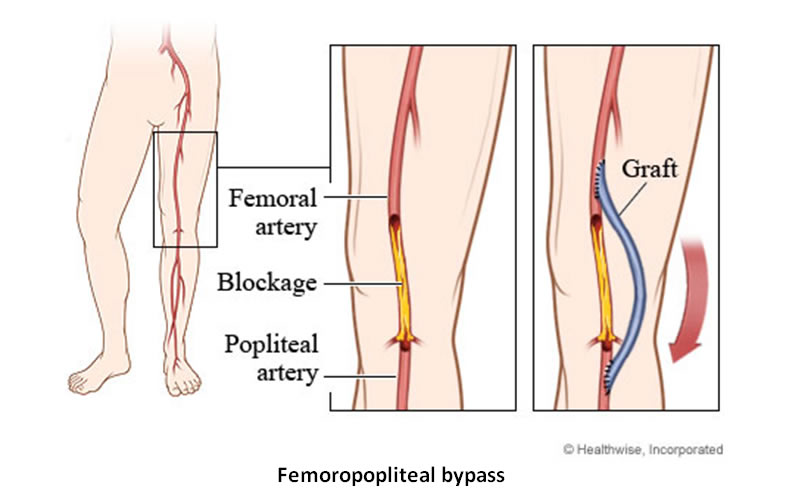Quicklinks
Bypass Surgery
You will have had investigation for your leg pain such as CT and MRI prior too needing a bypass procedure performed. If you have had an angioplasty or stenting done that has not been successful or been suitable to correct the problem, you may now be recommended to have a bypass graft done. Bypasses are used to re-route the blood supply around the blocked/affected area in a limb or other area in the circulatory system, much like a detour when a road is being repaired. An ultrasound scan will be done to determine if a vein from your leg is suitable to use for the bypass. If suitable the vein/s will be marked prior to surgery on your leg with a surgical marking pen. If no suitable vein is found then a synthetic graft will be used. The chosen graft will be tunnelled into position and attached/stitched to the artery on either end of the graft.
Your surgeon will discuss the risks of surgery with you at your clinic appointment prior to signing a consent form for the procedure.


Day of Surgery
- Admission to hospital usually on the day of the procedure
- Vein marking if required
- General anaesthetic or spinal required
- Operation may take approx 2- 3 hours
- You will need to stay in the Intensive Care Unit for the first 24hrs for close monitoring then you will go to the general ward
- Length of stay in hospital will be between 3 – 5 days
- Stitches will be beneath the skin surface and covered with a dressing for a few days
Post Surgery
- Gently start to mobilize when on the general ward and slowly increase
- You will need to wear the ted stocking you have been given even when discharged home
- You will not be able to drive a car for the next 3 – 6 weeks until you are able to apply the brakes
- When sitting keep your leg and foot elevated on a stool to help with swelling
- When travelling in a car sit in the back seat with the leg up on the seat.
- Most patient recover within 6 weeks
- You will need a clinic review in 3-6 weeks
- Contact the rooms if you have any signs of a cool/cold leg, increased pain or swelling in your limb, any redness or discharge or breakdown of the wound